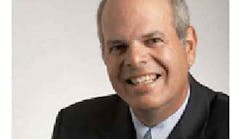As supervisors are faced with the ebb and flow of production needs, companies must go beyond the simple mechanical acknowledgement of birthdays, years of service, and end of careers. Indeed, to yield greater productivity, improve delivery times, increase retention, reduce absenteeism and have more committed employees, every manufacturer will need to embrace a culture of genuine, consistent, and repeated employee recognition.
Below are early steps to begin the process and demonstrate the value company-wide.
Lead by Example Don't wait on a company-wide mandate -- begin in your own department, assembly line crew or warehouse workforce. Start saying "thank you", "I appreciate it," and "great job!" -- the power of these words will amaze you. Say it as often as it is appropriate to acknowledge an action, initiative, behavior or result. Studies have repeatedly shown that employees don't leave companies -- they leave managers -- so the key is for managers to take note and express themselves more often. Keep your team motivated and engaged by highlighting good work and positive behaviors.
Track It Day-to-day recognition often proves to have tangible and measurable results. Is your department, assembly line, or plant operating better and more efficiently? Has absenteeism dropped? Has tardiness been curbed? Are deadlines being met on time or even early? Keep records of employees and their behaviours compared to what you have noticed informally in the past or based on prior documentation. The ROI should be apparent.
Employee Morale One of the benefits of employee recognition is employee empowerment. When they know they are valued and appreciation is shown -- they will embrace their tasks, jobs, and performance with maturity and ownership. With this new attitude they will be much more responsive to providing feedback and recognizing one another. Individually or in a group setting -- talk to them about the more positive atmosphere and what they think is the biggest impact of the various initiatives you have put into place and what suggestions or ideas for improvement they may have.
Recognition Should Encourage Not Replace
An effective recognition strategy builds upon company mission, values, and goals. Identify how the new behaviors and attitudes will be effective in achieving goals. If shortening production time is key -- then recognizing employees who come up with new ways to do that is important and should be encouraged. But make sure the recognition strategy doesn't conflict with traditional and more formal performance metrics and should not replace regular reviews.
Communicate with Other Managers
Once you implement recognition in a regular way and have some ROI to report -- share it with your manager and supervisor colleagues. With your research and your own personal experiences, get others involved. Don't just share how saying "thanks" has improved employee performance -- but how co-worker relationships and team-centered projects are being done with more speed and attention to detail with a more generous spirit.
Take It To the Top
Take what you know and what you can prove to the top -- the C-Suite or HR department. Present the initiatives you have put into place and highlight the results. Explain how these feed into overall business objectives and suggest ways they can be scaled up. Build the business case for a formal recognition program that can help make recognition a key component of the day-to-day work culture as well as of the overall business agenda.
Manufacturing environments need an engaged workforce to grow and thrive. Recognition is critical to helping attract and retain talent, boost employee morale, improve customer experiences, motivate staff to be more productive, and inspire them to be better engaged. By bringing recognition communication into the fold -- you increase the chances of doing all of these things as well as improving your bottom line.
John Mills, CRP, is executive vice president, Business Development at Rideau Recognition Solutions, which develops employee reward and recognition programs which maximize people, performance and profit.




